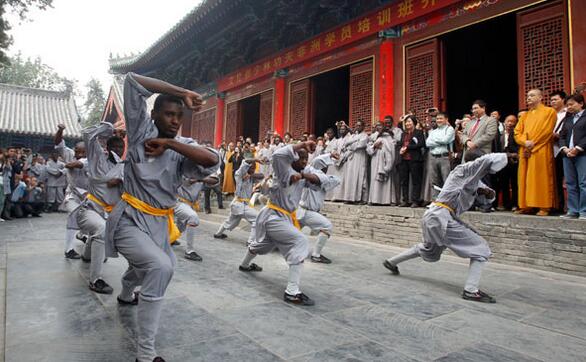Martial arts are not merely about learning self-defense; they are a journey of personal development, discipline, and mental resilience. Among these arts, Kung Fu stands out as a unique blend of physical agility, strategic thinking, and philosophical depth. Practicing Kung Fu allows individuals to cultivate strength, balance, and focus while embracing a centuries-old tradition that promotes holistic growth.
Understanding the Essence of Kung Fu
Kung Fu is an ancient Chinese martial art that has evolved over thousands of years. Originally developed for combat and self-protection, it has since grown into a comprehensive practice that enhances physical fitness, mental clarity, and emotional control. Unlike other martial arts, Kung Fu emphasizes fluid movements, precision, and the integration of mind and body.
Participating in a Kung Fu Class provides a structured environment where students can learn both foundational and advanced techniques. Classes are designed to teach proper stances, strikes, and forms while instilling the core values of discipline, respect, and perseverance.
Core Principles of a Kung Fu Class
A Kung Fu class is not just about physical training—it’s about cultivating a mindset and lifestyle. Here are some key principles that guide the practice:
1. Physical Balance and Coordination
Kung Fu places great emphasis on balance and coordination. Students learn to control their movements with precision, maintain stability during complex techniques, and develop strong reflexes. These skills enhance overall agility and posture, benefiting everyday activities beyond martial arts practice.
2. Discipline and Patience
Progress in Kung Fu is gradual and requires consistent practice. A Kung Fu class encourages students to set goals, maintain focus, and persevere through challenges. The discipline gained during training often extends into other areas of life, promoting organization, patience, and determination.
3. Mental Focus and Awareness
Mindfulness is a central component of Kung Fu. Practicing forms and techniques requires concentration, mental clarity, and situational awareness. This focus sharpens problem-solving skills, improves decision-making, and cultivates emotional stability.
4. Respect and Ethical Practice
Respect for instructors, peers, and the martial art itself is emphasized in every Kung Fu class. This principle fosters humility, cooperation, and ethical conduct, creating a supportive and disciplined learning environment.
Popular Styles Practiced in Kung Fu Classes
Kung Fu is a diverse art with many distinct styles, each emphasizing different techniques, philosophies, and movements. Understanding these styles can help students find an approach that aligns with their personal goals:
- Shaolin Kung Fu: Known for dynamic, acrobatic techniques and animal-inspired forms that develop strength and agility.
- Wing Chun: A style focused on efficiency, speed, and practical self-defense, ideal for close-range combat.
- Tai Chi: Often practiced for health and relaxation, this style combines slow, flowing movements with controlled breathing to improve balance, flexibility, and inner calm.
- Northern and Southern Styles: Northern styles emphasize high kicks and extended movements, while southern styles focus on strong stances and hand techniques.
Each style offers unique benefits, allowing practitioners to develop skills that suit their physical capabilities and personal objectives.
Physical and Mental Benefits of Attending a Kung Fu Class
Engaging in a Kung Fu class provides numerous advantages, supporting both physical fitness and mental well-being:
1. Strength and Flexibility
Kung Fu training involves dynamic movements and stances that strengthen muscles and improve flexibility. Over time, students develop a toned, agile, and resilient body.
2. Cardiovascular Fitness
The sequences and drills practiced in Kung Fu provide a full-body workout that boosts stamina, circulation, and heart health.
3. Stress Relief and Mindfulness
The focus and meditation-like aspects of Kung Fu help reduce stress and promote mental clarity. Practitioners learn to manage emotions and maintain composure under pressure.
4. Reflexes and Coordination
Repeated practice of strikes, blocks, and forms enhances reflexes, hand-eye coordination, and overall body control. These skills have practical applications in sports and daily life.
5. Confidence and Personal Growth
Mastering techniques and achieving milestones in a Kung Fu class builds confidence and self-esteem. Students learn perseverance, patience, and goal-setting, fostering growth in both personal and professional life.
How to Make the Most of a Kung Fu Class
To maximize the benefits of a Kung Fu class, it is important to approach training with dedication and mindfulness:
- Practice Consistently: Regular attendance and practice accelerate skill development and improve fitness.
- Focus on Proper Technique: Precision and form prevent injury and enhance effectiveness.
- Set Personal Goals: Define clear objectives to track progress and stay motivated.
- Incorporate Philosophy: Apply the ethical and mental principles of Kung Fu into daily life for personal growth.
- Be Patient and Persistent: Mastery takes time, effort, and commitment—patience is key to long-term success.
Conclusion
A Kung Fu class offers more than the opportunity to learn self-defense—it provides a holistic framework for developing physical fitness, mental clarity, and personal discipline. By integrating strength, balance, focus, and ethical principles, Kung Fu empowers practitioners to navigate life with resilience and confidence.
Whether the goal is fitness, self-defense, or personal growth, participating in a Kung Fu class offers timeless benefits that extend well beyond the training hall. Through consistent practice, mindfulness, and dedication, students not only master the art of Kung Fu but also cultivate a way of life rooted in discipline, respect, and perseverance.




